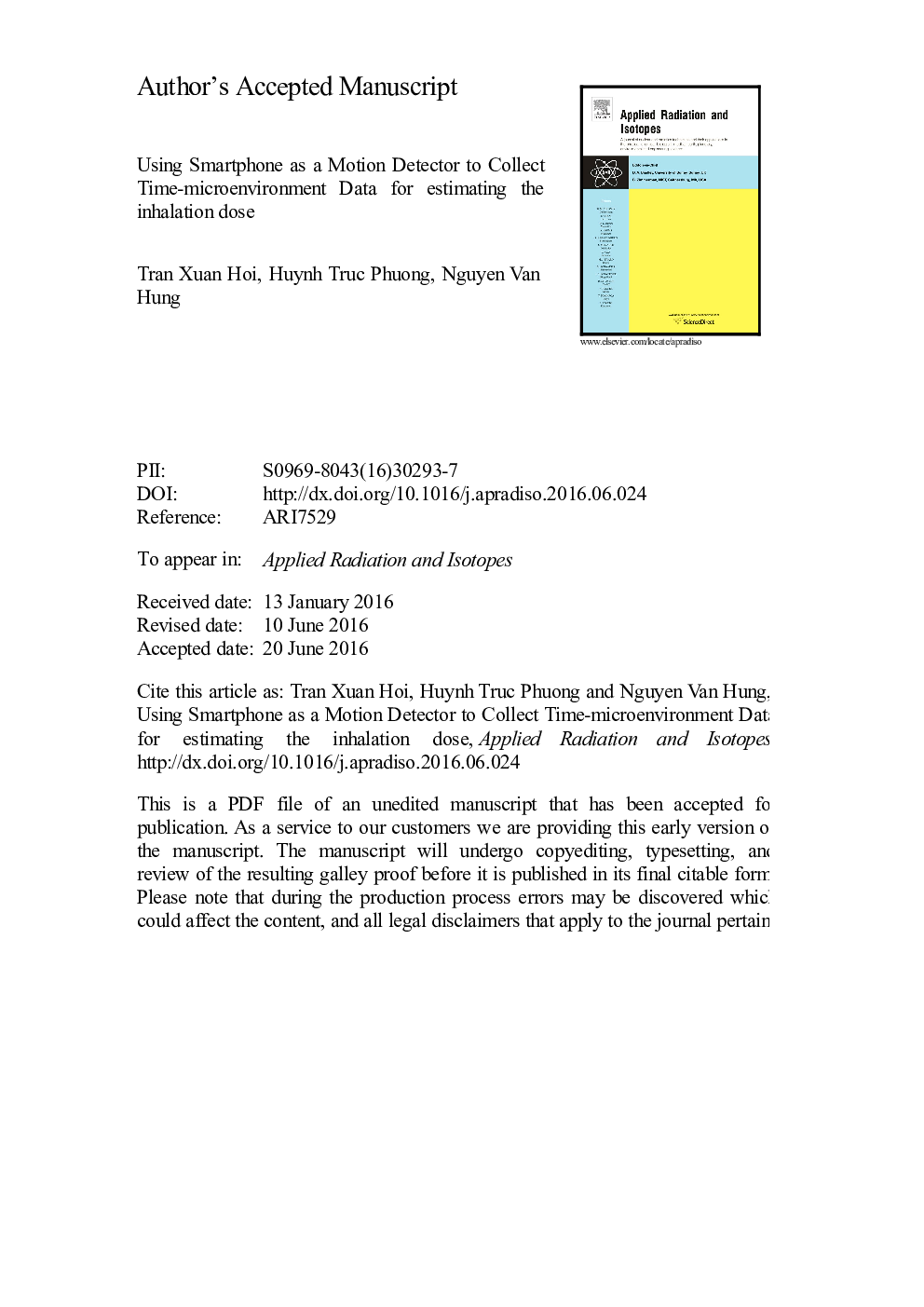| Article ID | Journal | Published Year | Pages | File Type |
|---|---|---|---|---|
| 8209180 | Applied Radiation and Isotopes | 2016 | 9 Pages |
Abstract
During the production of iodine-131 from neutron irradiated tellurium dioxide by the dry distillation, a considerable amount of 131I vapor is dispersed to the indoor air. People who routinely work at the production area may result in a significant risk of exposure to chronic intake by inhaled 131I. This study aims to estimate the inhalation dose for individuals manipulating the 131I at a radioisotope production. By using an application installed on smartphones, we collected the time-microenvironment data spent by a radiation group during work days in 2015. Simultaneously, we used a portable air sampler combined with radioiodine cartridges for grabbing the indoor air samples and then the daily averaged 131I concentration was calculated. Finally, the time-microenvironment data jointed with the concentration to estimate the inhalation dose for the workers. The result showed that most of the workers had the annual internal dose in 1÷6 mSv. We concluded that using smartphone as a motion detector is a possible and reliable way instead of the questionnaires, diary or GPS-based method. It is, however, only suitable for monitoring on fixed indoor environments and limited the targeted people.
Related Topics
Physical Sciences and Engineering
Physics and Astronomy
Radiation
Authors
Tran Xuan Hoi, Huynh Truc Phuong, Nguyen Van Hung,
